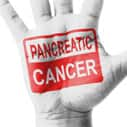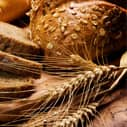
What's Hot
What's Hot
News flashes are posted here frequently to keep you up-to-date with the latest advances in health and longevity. We have an unparalleled track record of breaking stories about life extension advances.
Vitamin D deficiency common in men and women undergoing thyroidectomy
 September 29 2014. The American Academy of Otolaryngology-Head and Neck Surgery annual meeting held in Orlando September 21-24, 2014 was the site of a presentation of the finding of research conducted at Henry Ford Hospital of widespread vitamin D deficiency among individuals undergoing surgical removal of all or part of the thyroid gland. Deficient vitamin D levels increase the risk of potentially dangerous low postoperative calcium levels—a condition that could easily be prevented by vitamin D supplementation. "Low vitamin D levels have now been shown to increase this risk, even in the setting of normal postoperative parathyroid hormone levels," noted the study’s senior author Michael Singer, MD, who is the Director of the Division of Thyroid & Parathyroid Surgery in the Department of Otolaryngology-Head & Neck Surgery at Henry Ford. "Providing vitamin D supplementation to these patients prior to surgery is an easy and inexpensive step to make their surgery safer."
September 29 2014. The American Academy of Otolaryngology-Head and Neck Surgery annual meeting held in Orlando September 21-24, 2014 was the site of a presentation of the finding of research conducted at Henry Ford Hospital of widespread vitamin D deficiency among individuals undergoing surgical removal of all or part of the thyroid gland. Deficient vitamin D levels increase the risk of potentially dangerous low postoperative calcium levels—a condition that could easily be prevented by vitamin D supplementation. "Low vitamin D levels have now been shown to increase this risk, even in the setting of normal postoperative parathyroid hormone levels," noted the study’s senior author Michael Singer, MD, who is the Director of the Division of Thyroid & Parathyroid Surgery in the Department of Otolaryngology-Head & Neck Surgery at Henry Ford. "Providing vitamin D supplementation to these patients prior to surgery is an easy and inexpensive step to make their surgery safer."
The study included 110 patients who underwent thyroidectomy for benign or malignant disease in 2013. Vitamin D, calcium and parathyroid hormone levels were measured before surgery. Forty percent of the participants were classified as vitamin D deficient, which was defined as having a serum 25-hydroxyvitamin D level of 20 ng/mL or less. Deficient subjects were prescribed a course of vitamin D supplementation that was completed before their surgeries.
"The issue of vitamin D deficiency in patients who are undergoing thyroid surgery can potentially impact both the care of parathyroid glands during surgery and calcium management after surgery," commented study coauthor Hamad Chaudhary, MD, of Henry Ford’s Department of Otolaryngology-Head & Neck Surgery. "By routinely checking vitamin D levels in all patients scheduled for thyroid surgery or selectively testing those at great risk, we may be able to improve surgical outcomes and shorten hospital stays."
—D Dye
Vitamin D derivative could help treat pancreatic cancer
 September 26 2014. An article published online on September 25, 2014 in the journal Cell reports a potential benefit for a synthetic derivative of vitamin D in the treatment of cancer of the pancreas, which currently has little in the way of effective therapies. The compound works by changing the tumors’ microenvironment which, when activated, fuels cancer growth and impedes the entry of immune cells or cancer drugs. "There was evidence that the activation of the microenvironment was theoretically reversible, but nobody knew exactly what was responsible for the activation, making it hard to turn off," stated first author Mara Sherman, who is a postdoctoral research fellow at the Salk Institute.
September 26 2014. An article published online on September 25, 2014 in the journal Cell reports a potential benefit for a synthetic derivative of vitamin D in the treatment of cancer of the pancreas, which currently has little in the way of effective therapies. The compound works by changing the tumors’ microenvironment which, when activated, fuels cancer growth and impedes the entry of immune cells or cancer drugs. "There was evidence that the activation of the microenvironment was theoretically reversible, but nobody knew exactly what was responsible for the activation, making it hard to turn off," stated first author Mara Sherman, who is a postdoctoral research fellow at the Salk Institute.
In previous research, the Salk team found that a modified form of vitamin D inactivated liver stellate cells, which are activated during injury. Chronic activation of stellate cells that occurs near a tumor fuels its growth as well as surrounding it with a barrier. After uncovering high levels of the vitamin D receptor in activated stellate cells in the pancreatic tumor microenvironment, the researchers demonstrated that the vitamin D derivative was able to revert these cells to their quiescent state. When tested in a mouse model, administration of the compound with chemotherapy resulted in a 57% increase in survival in comparison with chemotherapy alone.
"It's really remarkable considering that vitamin D itself is not attacking the cancer cells," commented report coauthor Michael Downes, who is a senior staff scientist at the Salk Institute. "It's changing the environment to a more favorable setting needed for the chemotherapy drugs to work."
"Recently, other research groups have explored the idea of destroying the microenvironment altogether to weaken a tumor," Dr Downes added. "Our approach is very different. Instead of destroying, we simply want to reprogram the tumor microenvironment to a healthy state. This has the dual effects of delivering more drugs to the tumor as well as replenishing the tissue with normal stellate cells."
—D Dye
Greater fiber intake associated with lower mortality risk over nearly six years of follow-up
 September 24 2014. The American Journal of Clinical Nutrition published an online article on September 10, 2014 that reported a lower risk of dying from any cause during over an average period of 5.9 years among men and women with a high intake of fiber.
September 24 2014. The American Journal of Clinical Nutrition published an online article on September 10, 2014 that reported a lower risk of dying from any cause during over an average period of 5.9 years among men and women with a high intake of fiber.
The study included 7,216 men and women at increased risk of cardiovascular disease enrolled in the Prevención con Dieta Mediterránea (PREDIMED) trial, which sought to evaluate the effects of the Mediterranean diet on cardiovascular disease prevention. Diet was assessed via a yearly questionnaire. Over an average of 5.9 years, 425 participants died, including 103 deaths from cardiovascular disease and 169 from cancer.
Among subjects whose intake of fiber at the beginning of the study was among the highest one-fifth of subjects at an average of 33 grams per day, there was a 37% lower adjusted risk of dying in comparison with those whose intake was among the lowest fifth. When fiber was examined by source, fruit emerged as significantly protective. Those whose fruit intake was greater than 210 grams per day experienced a 41% lower risk of mortality over follow-up compared with those who consumed less.
"To the best of our knowledge, this study is the first to provide epidemiologic evidence with yearly repeated measurements of intake that increasing fruit and fiber consumption is associated with decreasing risk of all-cause mortality," authors Pilar Buil-Cosiales and colleagues announce.
"Our data were consistent with a wealth of existing studies in supporting the health benefits of fiber and fruit consumption," they write. "Fruit and vegetables contain a wide array of nutrients and phytochemicals that may act together to produce a benefit; vitamins, fiber, and minerals may confer cardioprotective, anticarcinogenic, anti-inflammatory and antioxidant properties."
—D Dye
Curcumin could help fight mesothelioma
 September 22 2014. Malignant mesothelioma, a cancer of the lining of the lungs that is largely attributable to asbestos exposure, could face a worthy opponent in the form of curcumin, a compound that occurs in the spice turmeric, according to research reported in the journal Clinical Cancer Research.
September 22 2014. Malignant mesothelioma, a cancer of the lining of the lungs that is largely attributable to asbestos exposure, could face a worthy opponent in the form of curcumin, a compound that occurs in the spice turmeric, according to research reported in the journal Clinical Cancer Research.
Ashfin Dowlati and colleagues at University Hospitals Case Medical Center in Cleveland measured mesothelioma tumor expression of PIAS3 (protein inhibitor of activated STAT3), which is correlated with overall survival. They additionally evaluated the effects of PIAS3 activity on the intracellular protein and transcription factor STAT3 (signal transducer and activator of transcription 3), which can trigger cancer onset and growth. “In those mesothelioma patients where PIAS3 is low, indeed STAT3 is activated,” reported Dr Dowlati. “Mesothelioma patients who have low PIAS3 and high STAT3 have a greater chance of dying early. On the flip side, those patients with a high PIAS3 levels have a 44 percent decreased chance of dying in one year, which is substantial.”
The team found that STAT3 down regulation, via enhanced expression of PIAS3 or exposure to a peptide derived from PIAS3, inhibited cell growth and increased apoptosis. Administration of curcumin resulted in PIAS3 induction, indicating a potential role for the compound in mesothelioma therapy.
“Our findings suggest that PIAS3 expression positively affects survival in mesothelioma patients and that PIAS3 activation could become a therapeutic strategy,” Dr Dowlati commented. “Our interest for the future is that we want to find better, more simple ways to increase intracellular levels of PIAS3 for malignant mesothelioma through the use of synthetic PIAS3 peptide or curcumin analogs.”
“Our findings beg the question of what role PIAS3 could play in limiting STAT3 activation in other cancers as well,” he added. “There is an opportunity to extend this discovery because a number of cancers are STAT3-activated.”
—D Dye
Lower risk of mortality over thirteen year period in association with higher levels of vitamin D
 September 19 2014. The American Journal of Clinical Nutrition published an article on September 17, 2014 that revealed a lower risk of dying over a 13 year average follow-up period among those whose serum vitamin D levels were highest in comparison with those whose were lowest.
September 19 2014. The American Journal of Clinical Nutrition published an article on September 17, 2014 that revealed a lower risk of dying over a 13 year average follow-up period among those whose serum vitamin D levels were highest in comparison with those whose were lowest.
Researchers at the University of Cambridge measured 25-hydroxyvitamin D [25(OH)D] levels in stored serum samples from 14,641 participants in the European Prospective Investigation into Cancer and Nutrition, who were between the ages of 42 and 82 years from 1997 to 2000. Subjects were followed until December 2012.
For men and women whose serum vitamin D levels were among the highest one-fifth of participants at an average of 36 ng/mL or more, there was a 27% lower adjusted risk of dying from all causes over follow-up in comparison with those whose levels were among the lowest fifth at less than 12 ng/mL. Those whose vitamin D levels were highest had a lower risk of death from cardiovascular disease, respiratory disease and other causes, and cardiovascular events, respiratory disease events and fractures were also reduced.
“This 13-year prospective study in a free-living, middle-aged and older British population provides additional support for the hypothesis that vitamin D status is associated with a range of important health outcomes including respiratory disease, cardiovascular disease, fractures, and total mortality,” Kay-Tee Khaw and colleagues write. “Only 1% of the population had concentrations greater than 120 nmol/L [48 ng/mL]. Within this observed population range, there was no evidence for increased mortality for 25(OH)D greater than 90 [36 ng/mL] or greater than 120 nmol/L [48 ng/mL], suggesting that a moderate increase in population mean concentrations may have a potential health benefit for preventing deficiency without increasing risk.”
—D Dye
Vitamin E critical for young and old
 September 17 2014. The September, 2014 issue of Advances in Nutrition published a review by vitamin E expert Maret Traber which emphasizes the need for vitamin E during early life, as well as during women’s reproductive and late life stages.
September 17 2014. The September, 2014 issue of Advances in Nutrition published a review by vitamin E expert Maret Traber which emphasizes the need for vitamin E during early life, as well as during women’s reproductive and late life stages.
"Many people believe that vitamin E deficiency never happens," stated Dr Traber, who is a professor in the College of Public Health and Human Sciences at Oregon State University. "That isn't true. It happens with an alarming frequency both in the United States and around the world. But some of the results of inadequate intake are less obvious, such as its impact on things like nervous system and brain development, or general resistance to infection."
In her review, Dr Traber observes that plasma alpha tocopherol levels of less than 12 micromoles per liter are association with a greater risk of poor pregnancy outcomes for mothers as well as their infants. "It's important all of your life, but the most compelling evidence about vitamin E is about a 1000-day window that begins at conception," stated Dr Traber, who is an investigator with the Linus Pauling Institute. "Vitamin E is critical to neurologic and brain development that can only happen during that period. It's not something you can make up for later."
Nuts, seeds, spinach, wheat germ and sunflower oil are good sources of the vitamin; however, these foods are not regularly consumed by most people. Since vitamin E is one of the most challenging nutrients to obtain in the diet, the concern of critics concerning excessive vitamin E intake is mostly unwarranted. She recommends a vitamin E supplement for all people, and emphasizes its importance for children through the age two, women who are pregnant, may become pregnant or are lactating; and elderly men and women.
—D Dye
Sulforaphane, quercetin improve cells' defense system
 September 12 2014. An article published ahead of print on September 2, 2014 in the journal Antioxidants and Redox Signalling provides evidence that beneficial compounds found in broccoli, onions and other foods could boost cellular defense.
September 12 2014. An article published ahead of print on September 2, 2014 in the journal Antioxidants and Redox Signalling provides evidence that beneficial compounds found in broccoli, onions and other foods could boost cellular defense.
The current study centers on Nrf2, a protein that enters and exits the cells’ nuclei once every 129 minutes according to research first conducted by Professor Paul J. Thornalley of England’s University of Warwick and his associates. When the protein is exposed to health threats, the rate of oscillation and cellular defense increases, which is accompanied by an elevation in antioxidant levels.
Dr Thornalley’s team found that sulforaphane from broccoli and other cruciferous vegetables, and quercetin, which occurs in onions, apples and other plant foods, increase Nrf2’s speed of oscillation between the cell’s nucleus and cytoplasm to once every 80 minutes.
"The way Nrf2 works is very similar to sensors in electronic devices that rely on continual reassessment of their surroundings to provide an appropriate response,” Dr Thornalley explained. "The health benefit of Nrf2 oscillating at a fast speed is that surveillance of cell health is increased when most needed, that is, when cells are under threat. By understanding how this process works and increasing Nrf2's speed without putting cells under threat, new strategies for design of healthier foods and improved drugs can be devised."
"A main nutritional challenge in Europe is to substantiate the beneficial effects of foods that are advertised to the consumers,” commented Andreu Palou, who is the coordinator of the EU-funded BIOmarkers of Robustness of Metabolic Homeostasis for Nutrigenomics-derived Health CLAIMS Made on Food (BIOCLAIMS) research program. “The approach of the group of Professor Thornalley is opening a fascinating new window."
—D Dye
Deficient vitamin D levels associated with greater risk of dying from sepsis or septic shock
 September 10 2014. Researchers at Detroit’s Henry Ford Hospital report a protective effect for having sufficient vitamin D levels against the risk of dying from sepsis or septic shock within thirty days of intensive care unit (ICU) admission. The findings were reported in the September, 2014 issue of the American Journal of Critical Care, a publication of the American Association of Critical Care Nurses.
September 10 2014. Researchers at Detroit’s Henry Ford Hospital report a protective effect for having sufficient vitamin D levels against the risk of dying from sepsis or septic shock within thirty days of intensive care unit (ICU) admission. The findings were reported in the September, 2014 issue of the American Journal of Critical Care, a publication of the American Association of Critical Care Nurses.
The study included 121 men and women admitted to the hospital’s ICU with severe sepsis or septic shock, an inflammatory state resulting from infection in the bloodstream. Blood samples obtained before or during admission were analyzed for serum 25-hydroxyvitamin D levels. Vitamin D deficiency, categorized in this study as a level of 15 nanograms per milliliter (ng/mL) or less, was uncovered in 54% of total patients, and among Africa Americans, the rate was 77%.
Thirty percent of vitamin D-deficient subjects died from any cause within thirty days of admission, in comparison with 20% of those who were not deficient. When the ninety days following admission was examined, the percentage of those with vitamin D deficiency who died climbed to 51% in comparison with 25% of the nondeficient group. Intensive care unit stay averaged six days longer in deficient patients in comparison with those who were not deficient.
“Mortality may be decreased by ensuring adequate vitamin D concentrations through supplementation with ergocalciferol or cholecalciferol within 30 days of hospitalization,” the authors write. ”This finding has important implications because sepsis is a leading cause of mortality in critically ill patients.”
“Further evaluation in a larger sample of patients or through randomized controlled trials is necessary to further explore our results,” they conclude.
—D Dye
Watch out for waiting
 September 8 2014. Findings from a study reported in Urologic Oncology on September 8, 2014 indicate that watchful waiting, a disease non-treatment strategy recommended to many older men with low grade prostate cancer, may not be appropriate for all patients, particularly African Americans.
September 8 2014. Findings from a study reported in Urologic Oncology on September 8, 2014 indicate that watchful waiting, a disease non-treatment strategy recommended to many older men with low grade prostate cancer, may not be appropriate for all patients, particularly African Americans.
"We know that African American men have more aggressive prostate cancer than Caucasian men," stated lead researcher Kosj Yamoah MD, PhD, who is the Chief Resident of Thomas Jefferson University’s Department of Radiation Oncology. "Our study shows that African American men who are diagnosed with a low-grade cancer at first – the cancers that are sometimes watched rather than treated – are more likely to develop aggressive disease sooner than Caucasian men."
Dr Yamoah and associates evaluated data from a group of men with low to intermediate grade cancer as indicated by Gleason scoring of biopsy samples obtained by surgical removal of all or part of the prostate gland. (Restricting the study to men who underwent surgical removal of tissue for biopsy rather than needle biopsy samples helped ensure the accuracy of the tumor grading process by reducing the chance of missed areas of aggressive disease.) Over a seven year period, disease control was observed in 90% of Caucasian men as opposed to 79% of African American men.
The authors of the study suggest that a prospective analysis will provide more certainty than the current retrospective study in regard to whether African American men with low Gleason scores should be treated more aggressively. Dr Yamoah is investigating genetic markers in African American men to help identify those at risk of prostate cancer progression.
—D Dye
Higher potassium intake linked with lower risk of death, stroke over a decade
 September 5 2014. The finding of a reduced risk of stroke and premature mortality among women with a higher intake of potassium was reported in an article published on September 4, 2014 in the AHA journal Stroke.
September 5 2014. The finding of a reduced risk of stroke and premature mortality among women with a higher intake of potassium was reported in an article published on September 4, 2014 in the AHA journal Stroke.
"Previous studies have shown that potassium consumption may lower blood pressure,” commented senior author Sylvia Wassertheil-Smoller, PhD, of the Albert Einstein College of Medicine in New York. But whether potassium intake could prevent stroke or death wasn't clear."
The current investigation utilized data from 90,137 postmenopausal women who had no history of stroke upon enrollment in the Women’s Health Initiative Observational Study. Dietary questionnaire responses were analyzed for potassium intake, which averaged 2,611 milligrams per day. Over an average 11 year follow-up period, 3,046 strokes (including 2,190 ischemic strokes) occurred and there were 11,596 deaths from all causes.
Among women whose potassium intake was among the highest 25%, there was a 12% lower risk of stroke, a 16% lower risk of ischemic stroke and a 10% lower risk of dying from any cause over follow-up in comparison with those whose intake was among the lowest 25%. Subjects among the top 25% of potassium intake who did not have hypertension experienced a risk of stroke that was 21% lower and a risk of ischemic stroke that was 27% lower than those in the lowest fourth.
Although the U.S. Department of Agriculture recommends a level of 4,700 mg of potassium daily, Dr Wassertheil-Smoller observed that "Only 2.8 percent of women in our study met or exceeded this level. The World Health Organization's daily potassium recommendation for women is lower, at 3,510 mg or more. Still, only 16.6 percent of women we studied met or exceeded that."
"People should check with their doctor about how much potassium they should eat," she advised.
—D Dye
Higher plasma antioxidant levels associated with lower pancreatic cancer risk
 September 3 2014. The results of a study published online on August 30, 2014 in the International Journal of Cancer suggest a protective effect for higher antioxidant levels against the risk of cancer of the pancreas, the fourth most common cause of cancer death in the U.S.
September 3 2014. The results of a study published online on August 30, 2014 in the International Journal of Cancer suggest a protective effect for higher antioxidant levels against the risk of cancer of the pancreas, the fourth most common cause of cancer death in the U.S.
The case-control study included participants in the European Prospective Investigation into Cancer and Nutrition (EPIC) ongoing multicenter cohort study, which was designed to investigate the relationship between diet and other factors with chronic disease incidence. Four hundred forty-six subjects diagnosed with pancreatic cancer were matched with an equal number of control subjects who were free of the disease. Prediagnostic blood samples were analyzed for plasma carotenoids (including alpha carotene, beta carotene, cryptoxanthin, lycopene, lutein and zeaxanthin), retinol, vitamin C and tocopherol (vitamin E) levels.
For those whose beta carotene levels were among the top 25% of participants, the risk of pancreatic cancer was 48% lower than that of subjects whose levels were among the lowest fourth. A 47% lower risk was observed for those who consumed the most zeaxanthin, and for subjects whose alpha-tocopherol levels were among the top fourth, pancreatic cancer risk was decreased by 38%.
“Vegetables and fruits may play a role in the prevention of pancreatic cancer because they contain potentially protective substances, such as carotenoids, vitamin C and tocopherols, folate and other phytochemicals,” authors Suzanne M. Jeurnink of University Medical Center Utrecht and her colleagues note. “Potential mechanisms of such bioactive compounds include protection against free radical damage to DNA, enhancing immune function, and inhibiting insulin-like growth factor (IGF) by binding to IGF receptors.”
“Our results show that higher plasma concentrations of beta-carotene, zeaxanthin and alpha tocopherol may be inversely associated with pancreatic cancer,” they conclude. “Further research using larger sample sizes is warranted.”
—D Dye

